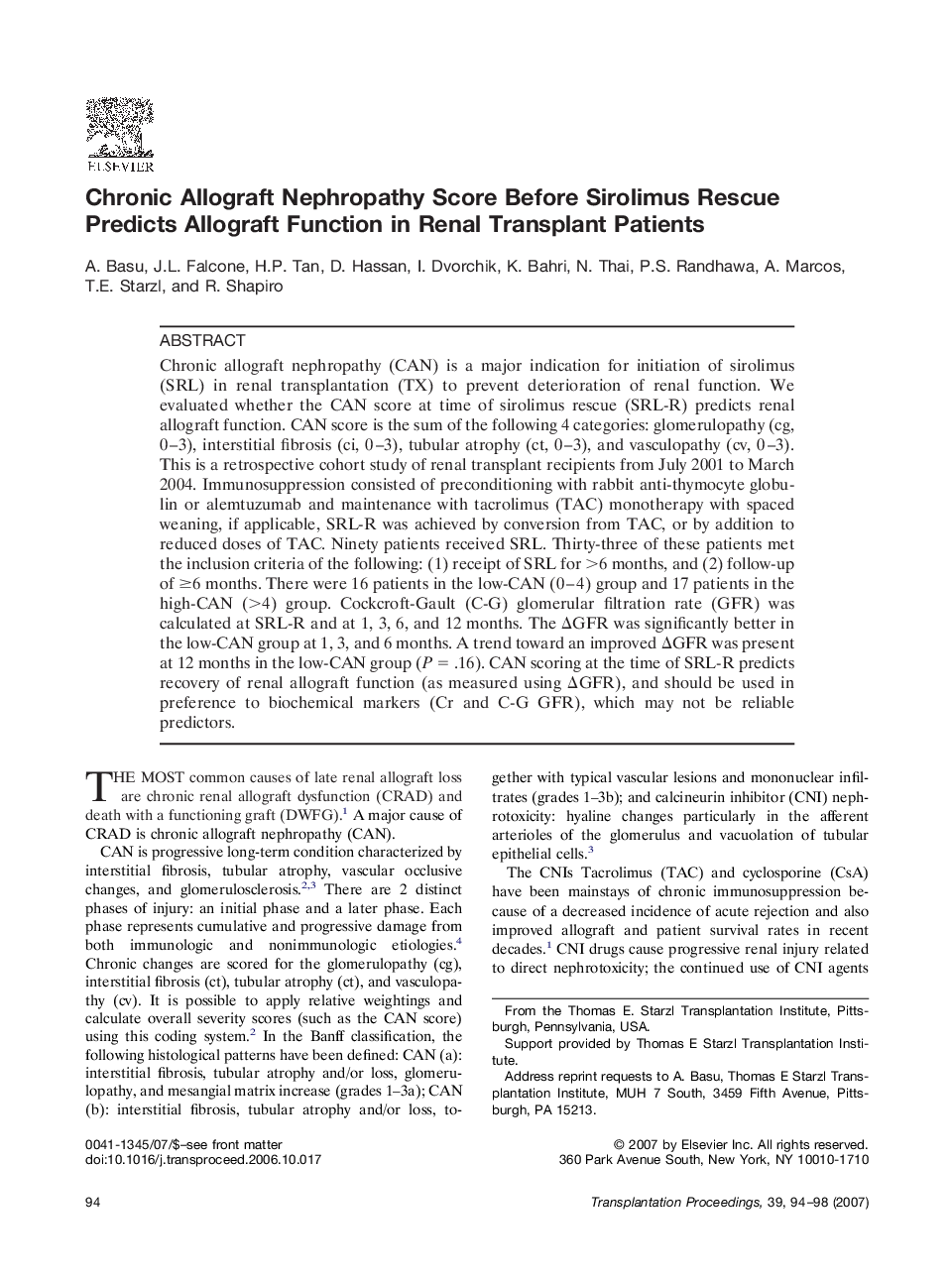| Article ID | Journal | Published Year | Pages | File Type |
|---|---|---|---|---|
| 4262919 | Transplantation Proceedings | 2007 | 5 Pages |
Chronic allograft nephropathy (CAN) is a major indication for initiation of sirolimus (SRL) in renal transplantation (TX) to prevent deterioration of renal function. We evaluated whether the CAN score at time of sirolimus rescue (SRL-R) predicts renal allograft function. CAN score is the sum of the following 4 categories: glomerulopathy (cg, 0–3), interstitial fibrosis (ci, 0–3), tubular atrophy (ct, 0–3), and vasculopathy (cv, 0–3). This is a retrospective cohort study of renal transplant recipients from July 2001 to March 2004. Immunosuppression consisted of preconditioning with rabbit anti-thymocyte globulin or alemtuzumab and maintenance with tacrolimus (TAC) monotherapy with spaced weaning, if applicable, SRL-R was achieved by conversion from TAC, or by addition to reduced doses of TAC. Ninety patients received SRL. Thirty-three of these patients met the inclusion criteria of the following: (1) receipt of SRL for >6 months, and (2) follow-up of ≥6 months. There were 16 patients in the low-CAN (0–4) group and 17 patients in the high-CAN (>4) group. Cockcroft-Gault (C-G) glomerular filtration rate (GFR) was calculated at SRL-R and at 1, 3, 6, and 12 months. The ΔGFR was significantly better in the low-CAN group at 1, 3, and 6 months. A trend toward an improved ΔGFR was present at 12 months in the low-CAN group (P = .16). CAN scoring at the time of SRL-R predicts recovery of renal allograft function (as measured using ΔGFR), and should be used in preference to biochemical markers (Cr and C-G GFR), which may not be reliable predictors.
